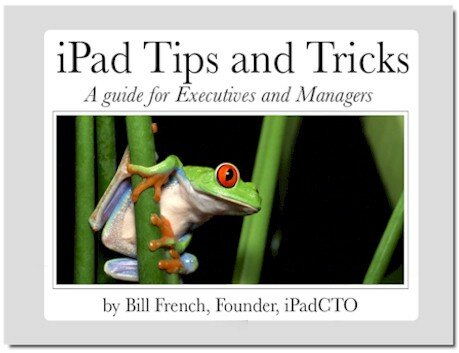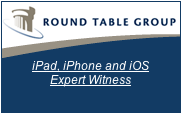I’ve been pretty quiet about Microsoft Surface, but today I come out of hibernation on this topic. Someone waved red meat outside my cave and I couldn’t resist.
The Red Meat
In a recent interview, user interface guru Don Norman (Nielsen Norman Group) said that in his opinion Android is far more a copy of Apple’s iOS than what Microsoft’s created. Perhaps this is true. Certainly Steve Jobs shared this sentiment and openly stated as much. However Mr. Norman also said this about Surface,
“I’m impressed that Microsoft said ‘let’s look at how one works with gestures and not copy Apple’. That’s what’s so brilliant,”
Suggesting it’s a stroke of “brilliance” that Microsoft decided to not copy Apple is a silly commentary on the debate. With the litigious climate of mobile, Microsoft had no choice but to avoid the known potholes. Labeling this as a reflection of how “innovative” Microsoft has become concerning the Surface, is a foolish notion.
A more intellectual analysis of the innovative process leading up to Surface, given existing and well-documented touch and form-factor patents, might reveal just how narrow a pathway Microsoft and other tablet-wanna-be makers must navigate to enter the post-PC market. A more compelling commentary might suggest that the passage into mobile and post-PC products is so narrow and trecherous that it may be impossible to create a serious threat to any existing post-PC era products.
In contrast to Mr. Norman’s assertion, it’s my view that Surface is a highly constrained and far less innovative product than it might have been were it not for a vast body of prior art created (and owned) by Apple and Google. Stated with less ink – too little, too late.
Surface looks like a notebook and for good reasons based largely within the confines of an intellectual property cluster-you-know-what. And it probably feels a lot like a notebook as well. But we don’t really know what it feels like because not a single a reporter at the launch event was allowed to touch one while it was running, a bright red neon-glowing red flag in my book.
Perhaps [partly] because of all the hardware partner tablet misfires, Microsoft came to the mobile tablet party so late that caviar is long since consumed, the champagne is flat, and the room is littered with passed out vendors who got drunk way too early on the equivalent of an open-source Sangria.
Apple, Motorola and a few others got to the party early. Apple, more so than any other company, quietly embraced the post-PC idea long before it was coined the post-PC era. Microsoft didn’t. And still hasn’t, mostly because they can’t, but also because they won’t.
That’s the story lurking just below the “surface”.




















It’s typical of Microsoft, all things to all people. Touch and pen and keyboard with the user constantly thinking a half second. “Which do I do next? Excuse me while I reach over and hit this thing on the vertical screen.” You know that’s going to get old fast.
Not to mention the fragmentation of ARM with no legacy and the Intel versions. Again Microsoft throws things at the wall to see what will stick.
There are people out there salivating about using Adobe Premiere on a real tablet. And they say Apple has kool aid drinkers? There is a small market for it, maybe 10% of the tablet niche. Apple simplifies and goes for the mass market device and leaves the keyboards and most doo-dads to the ecosystem of the secondary market.
The ARM version of Surface can’t run Windows applications, and there are currently no Metro applications. So most Windows users will want the Intel version of Surface. But…
The Intel version of Surface must use a keyboard and trackpad/mouse, and the stylus, in order to use Windows applications, since they are not multi-touch enabled. So what we have here is another attempt to sell people on the Tablet PC, which has been a failure since it was introduced in 2000.
In addition, the Intel version of Surface will be priced similar to Ultrabooks. For the same price as an Ultrabook you get a tablet+keyboard combo that weighs as much as an Ultrabook, is thicker than an Ultrabook, has a slower Intel processor than an Ultrabook, has less RAM than an Ultrabook, has a much smaller SSD than an Ultrabook, has a floppy keyless keyboard, instead of a real keyboard like Ultrabooks, and has a 10″ display instead of the Ultrabooks’ 13″ or 14″ display.
Oh, and Ultrabooks can be used on uneven surfaces, like your lap, while the Surface+keyboard combo can’t. ;-)
Maybe they’ll come out with an Ultrabook that has a swivel display that you can use with just the stylus.
Oh wait! That’s the same thing as the Tablet PC! :-D
Excellent points.
ViewRoyal said:
“Maybe they’ll come out with an Ultrabook that has a swivel display that you can use with just the stylus. Oh wait! That’s the same thing as the Tablet PC! ”
Here’s one example already out maybe a year+ earlier than the vaporous fold-a-case Surface
http://www.geeks.com/details.asp?invtid=BLK-INSPIRON-DUO-2R&cat=NBB
One issue is that MS doesn’t know what they want to do. They see this huge market looming before them and they want the revenue but they don’t really know how to participate. Internally they are arguing, some people have left. I imagine committees are setting design goals now.
Love them or hate them Apple has a clear idea of what they want to do and are charging ahead with that vision. They will be hard to stop till the next paradigm shift.
>>> They will be hard to stop till the next paradigm shift. <<<
Well said.